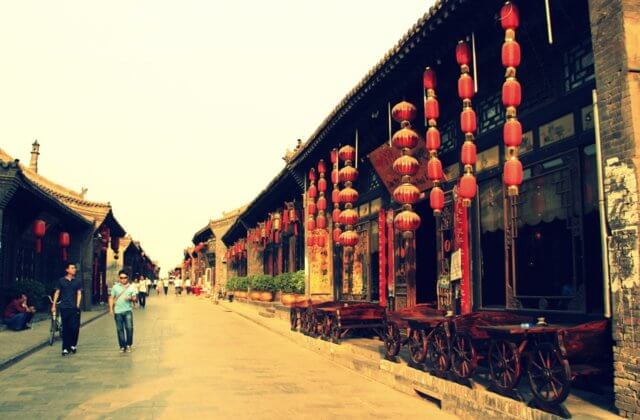
H’s photos: A relaxing stroll through the streets of Pingyao
Pingyao is one of China’s most loved domestic tourist destinations. People come away describing the dream-like qualities of the old cobbled streets, the peaceful courtyards of the historic buildings and the friendly openness of the people.
I wandered round and saw inappropriate restoration jobs, hectic courtyards full of spitting tour groups and hawkers desperate to sell you any old overpriced rubbish to make a few yuan.
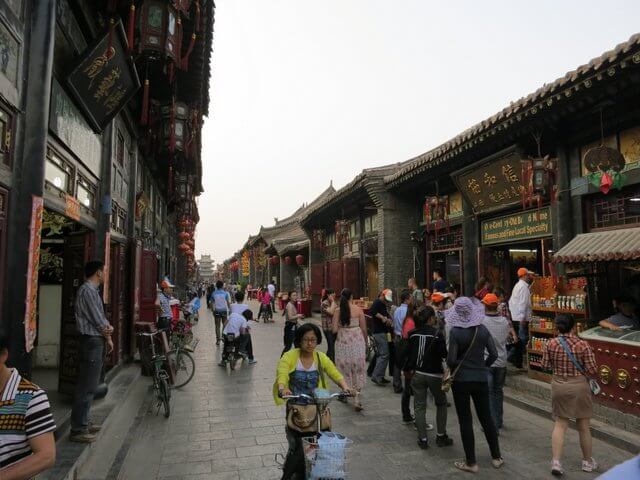
My photos: Tourists everywhere
It does seem that what one takes away from the city is very much what you put into it, and this is reflected in the photos that we both took. Mine show a grubby, phlegm-covered tourist trap resembling a theme park and H’s show a serene, laid-back journey through time.
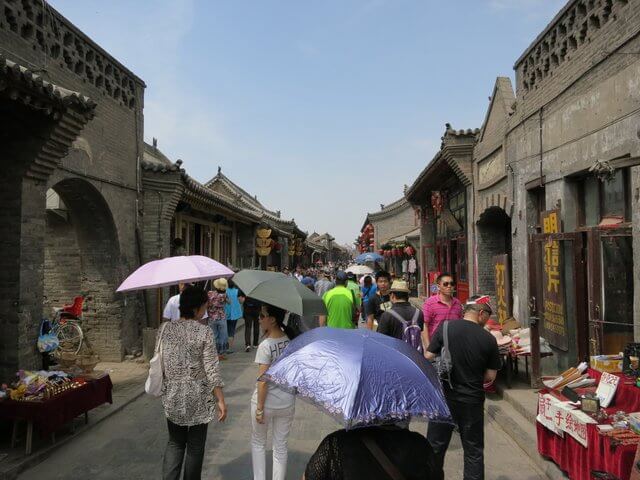
My photos: Tourist with umbrellas constantly trying to poke my eye out
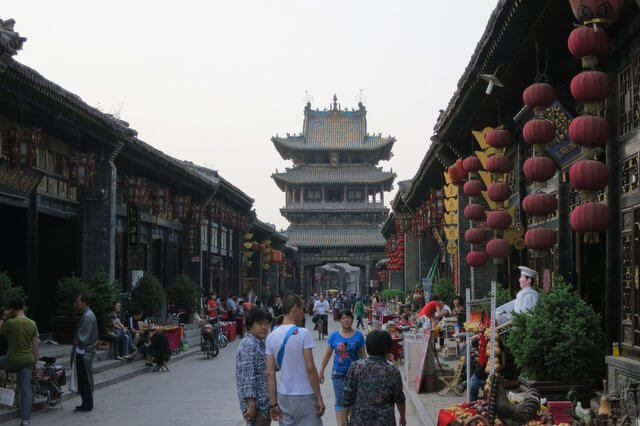
My photos: Tourists thronging the centre of the Ancient City
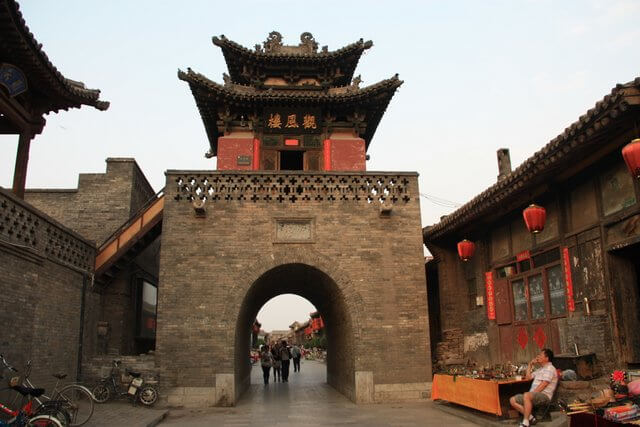
H’s photos: A man sits, lost in his dreams, at one of the city gates
Made a UNESCO World Heritage site in 1997, the walled area of Pingyao is 2,700 years old and dates back to the late Ming and Qing dynasties. It’s famed for its perfectly preserved architecture. Numerous buildings and courtyards throughout the city have barely changed in hundreds of years and it’s possible to see the birthplace of China’s commercial banking business, set up to cater to the once thriving merchants.
As the centuries progressed, the trade routes moved and the city fell into poverty, leaving the past grandeurs unchanged for 600 years.
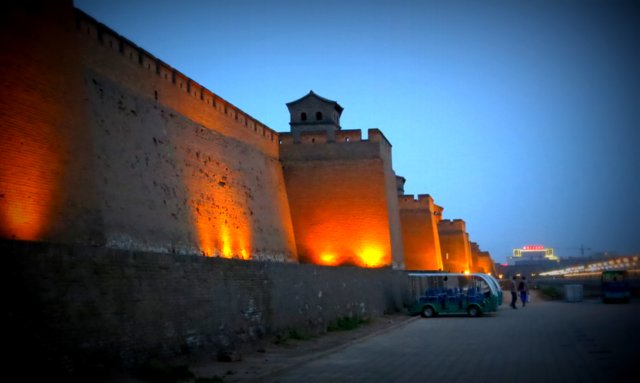
The city walls at night
The city walls date from the Ming Dynasty (1370) and run for 6.4km round the city. 72 watchtowers are dotted along the 10-12m high wall, which is lit up at night. The wall is much smaller than that of Xi’an, yet the low buildings make it an excellent viewpoint across the ancient city.
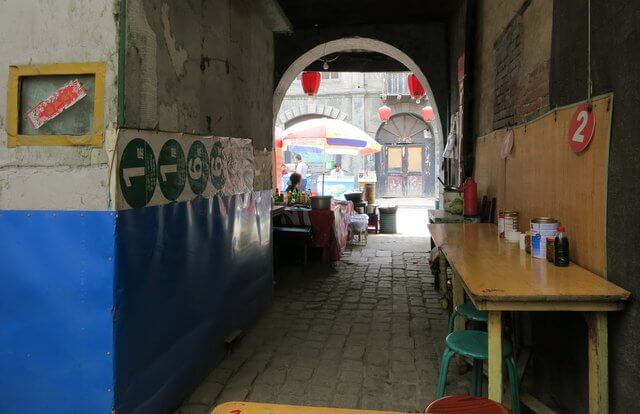
Eschewing the guidebook we stopped in this literal hole-in-the-wall for lunch.
Food in PingYao
PingYao’s redeeming feature is the quantity and quality of Shanxi dishes on offer. Lighter than many Northern Chinese cuisines and more flavourful than those in Western China, Shanxi cuisine is particularly enjoyable and it’s surprising it’s not more popular abroad, where Cantonese still reigns supreme.
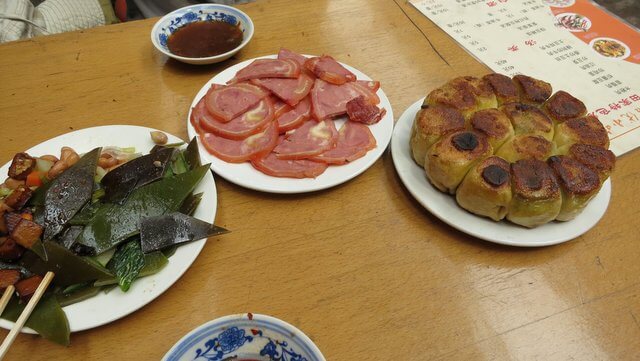
Left-to-right: Seaweed, Pingyao beef and Pingyao dumplings. The dip doubled up for the beef and the dumplings
PingYao’s two local specialities are the PingYao beef (looks like reformed ham, tastes like corned beef), and PingYao dumplings (thick-skinned vegetarian dumplings, squashed together and fried).
The other Shanxi speciality is something I first tried at the WuTaiShan temples – laolao youmian are tubes of oat pasta pressed together and steamed. Made well, as served in PingYao, they’re delicious – made badly, as in WuTai, you get served up something more like a rubbery waffle. Also called wowo they’re served with each restaurants secret sauce, ranging from garlicky vinegar to chicken broth or a thick and spicy tomato paste.
Dinner was a little more hit-and-miss at the night market
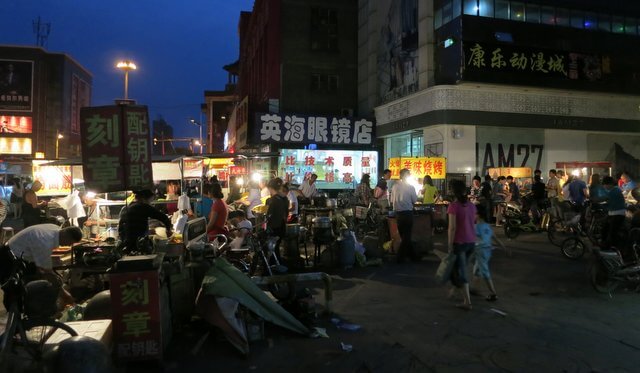
My photo of the grubby night market and the screaming stallholders
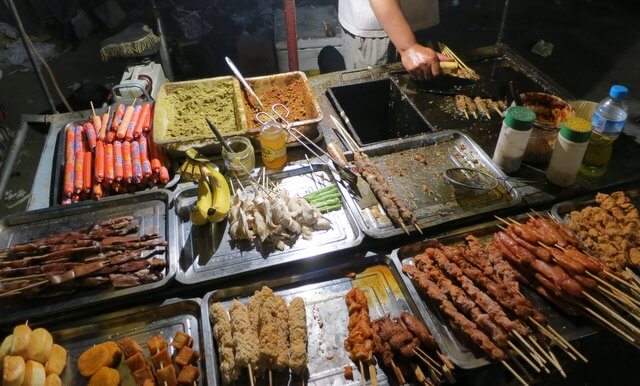
A fine array of unidentifiable but delicious items on a stick. Top-left it’s possible to see the vendor griddling the kebabs using a flat-iron. The boxes at the top are varying levels of chilli powder.
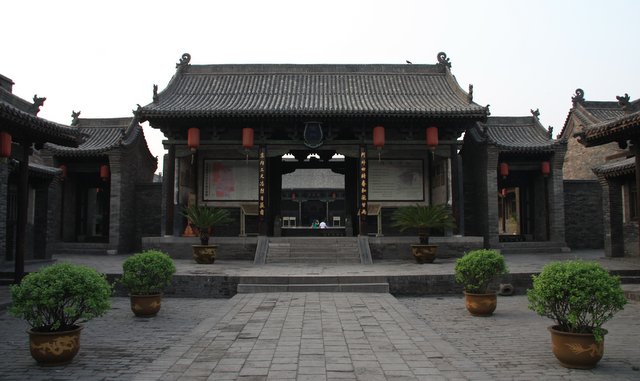
Courtyard of the old County Government Offices
Visitor tips to PingYao
It’s possible to see most of the interesting sites in a day, but the minimum ticket is a three-day pass for 155rmb.
Getting around the city is easy – there are motorised or cycle rickshaws everywhere. Negotiations always started around 30rmb, but they only expect 10rmb for most trips, including the 15 minute ride from our hotel by the train station to the ancient city.
Look out for electric buggies ferrying tour groups around, they’re silent and have a tendency to get a bit too close before using their horn.
Accommodation outside the city walls is cheap and modern. Inside the walls it’s possible to stay in a traditional courtyard and sleep on a kang brick bed, but you’ll pay for the nostalgic experience rather than the comfort of the amenities.
Head away from the gaudy main strips and the sightseeing attractions to find the real city – people still live here, hanging their washing and playing chess. For a far more authentic experience, make the difficult journey to the still authentic village of QiKouZhen and the nearby cave dwellings in LiJiaShan.
Maybe I was having a bad day?
Possibly, but the city authorities had seen fit to put this sign up.
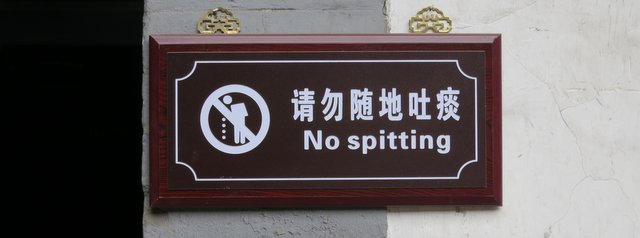
There’s so much phlegm flying about they have to put a sign up to remind people not to spit on the ancient national treasures.






Pingback: (@Ju1i4n) (@Ju1i4n)
Pingback: Cez (@CezKrol)
Pingback: Backpacker Boy (@BackpackerBoy)
Pingback: (@WanderingEds) (@WanderingEds)
Pingback: (@wesaidgotravel) (@wesaidgotravel)
Pingback: Chris & Tawny (@CaptainandClark)
Pingback: (@michaelturtle) (@michaelturtle)
Pingback: K Catchpole - E Mohl (@TransAmericas)
Pingback: (@WanderingEds) (@WanderingEds)
A fascinating post with great pictures. The icon on the No Spitting sign is a hoot!
Pingback: Adam (@travelsofadam)
Pingback: Chrystal-Clear (@ChrystalClear_)
I’ve been to Pingyao a few times, and it’s sad that you had such a bad experience. I wonder if it’s a matter of timing. I’ve been in late autumn or early summer, and there weren’t many tourists. Did you go during a Chinese public holiday, or high summer? That would probably give a quite different experience…
It shouldn’t have been a busy period, but it was just unfortunate there were a lot of bad tour groups there during our visit. May go back one day.
Pingback: @Treksplorer
I’ll be sure to keep away from the umbrellas!